Audumbara Deeksha
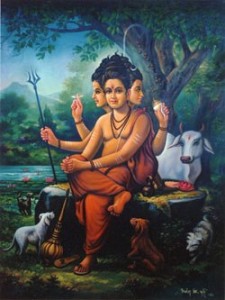
AUDUMBARA KALPA VRIKSHASYA || KAAMADHENUSCHYA SANGAMA||
CHINTHAAMNI GURO PAADO || DURLABHO BHUVANA THRAYE||ఔదు౦బర కల్ప వృక్షస్య || కామధేనుశ్చ స౦గమ: ||
చి౦తామణి గురో పాదో || దుర్లభో భువన త్రయే||
The Audumbar tree (Ficus racemosa) is a 24-hour oxygen generator and cannot be planted manually. It grows on its own mainly through the birds, which eat its fruits. Audumbar tree is associated with Guru Dattatreya, one of the main Hindu deities and cutting or dishonoring the tree in any way is considered as a sin. So by associating with Hindu deity, it have been protected, so that no one would cut it. Audumbara Deeksha gives Ashta siddhi and the desires of the devotees will be fulfilled whoever performs this deeksha with full dedicated devotion on Lord Dattatreya. This Deeksha is familiar from the time of Eknath Panth period.The Deeksha should be taken under the guidance of proper Guru only. If one is blessed with Deeksha from a Guru, he/she must do it according to the guidelines prescribed by the Guru only. Generally datta deeksha is started and ended in a Datta kshetra or Datta temple. Many and many experiences are there for the devotees who have taken this deeksha and fulfilled their desires like Marriage, Putra santhaana, improvement of financial status, Business development, curing of health problems, Very good education, Best results in Examinations, Getting of Job, Clearing of Genuine legal affairs and so on. The deeksha can be taken by anyone irrespective of the age, caste, creed and marital status. This Audumbar/Datta deeksha is highly recommended, propagated and popularized by Shri Ganapathi Sachidananda Swamiji of Mysore. It is astonished to know that, some of the devotees are in this deeksha for a period of 365 days.
International naming for Audumbar
• අටිටිකිකා (Attikka) in Sinhala, ಅತ್ತಿ (atti) in Kannada, మేడి పండు (Medi Pandu) Telugu, மலையின் முனிவன் (Malaiyin munivan) in Tamil, அத்தி (Aththi) Tamil, അത്തി (Aththi) Malayalam.,उंबर (Umbar) / औदुंबर (Audumbar) in Marathi, ডুমুর (Dumur) in Bengali, डुम्री (Dumri) in Nepal .
AUDUMBARA USES:
- The roots, bark-skin, fruits, lates and leaves of audumbara have great medicinal value.
- Audumbara is used both, internally as well externally, externally the latex is applied on chronic infected wounds to alleviate edema, pain and to promote the healing.
- The tender leaf buds are applied on the skin, in the form of paste, to improve the complexion.
- The decoction of leaves is salutary in washing the wounds for better cleansing and healing.
- The decoction of its bark-skin is an effective gargle in stomatitis and sore throat.
- Internally, Audumbara is used in vast range of maladies.
- The decoction of bark skin is extremely useful in diarrhea, dysentery and ulcerative colitis.
- In children, the latex is given along with sugar to combat diarrhea and dysentery.
- The cold infusion of ripened fruits mixed with sugar, is salutary in Rakta pitta is effectively controlled with the decoction of bark-skin.
- In diabetes, the ripe fruits or bark-skin decoction is beneficial, as it works well as anti-diuretic.
- The decoction of leaves is an effective remedy in glandular swelling, abscess, chronic wounds, cervical adenitis etc.
- In uterine bleeding, abortion, leucorrhea and vaginal bleeding the decoction of its bark-skin is given orally, as well as in a form of basti (enema).
Every human has an influence of Navagrahaa and Lord Shani is the devotee of both Shiva and Narayana. Guru is the Nayakatwam for Lord Shani. Abhishekas, Poojas and Archanas give super benefit for those suffering from them alefic effects of Shani. Any astrological feature, any star or any malefic placement ranging from sapthavaarshika shani (Elanaati shani/Saade-sath shani/Ashtami shani/Kantaka shani) can be avoided by sincere pleas to Shri guru deva Dattatreya. Deeksha means a period of sincere austerity towards a particular deity by concentrating all vital energies only for that deity. Deeksha is the transfer of the sacred golden energy of divine grace, which descends and initiates the journey into higher states of consciousness. Deeksha can also be seen as a divne surgery for brain where there is a process of transformation in the parietal lobes and an activation of the frontal lobes which results in the experience of non-separation, the experience of unconditional love, joy and peace which will eventually lead to an enlightement and oneness. Deeksha does not belong to any religion or any particular belief or spiritual path.
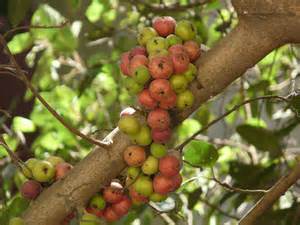 The Audumbar vriksha or cluster fig tree is a variety of fig-tree held sacred in India. It is said to flower at intervals of long centuries. It is a large tree that provides dense shade and edible fruit. Devotees of Lord Dattatreya preferably observe their penance (reading of sacred books, meditation etc.,) under this tree. Dried twings of this tree are used in Homa-sacrifices .
The Audumbar vriksha or cluster fig tree is a variety of fig-tree held sacred in India. It is said to flower at intervals of long centuries. It is a large tree that provides dense shade and edible fruit. Devotees of Lord Dattatreya preferably observe their penance (reading of sacred books, meditation etc.,) under this tree. Dried twings of this tree are used in Homa-sacrifices .
Its leaves are commonly used as cattle fodder. Dattatreya and his five principal avataras reside in an audumbar vriksha. Audumbara tree which is the favourite of Lord Dattatreya is used for the deeksha. Audumbar deeksha is a Mukthi deeksha. Mukthi deeksha in Hindu philosophy is said to be a transfer of divine energy given by a Guru to a disciple.
The following is an extract of Chapter 19 of Shree gurucharitra which describes the glory f Audumbara. Greatness of Audumbar:
Namdharak: leaving other holy trees why Shri guru lived under the audumbar tree ? Greatness of Ashwattha is described even in the Vedas, Why then he preferred Audumbar?
SIddha: Shri Vishnu took Narasimhawatar to kill the demon Hiranyakashyapu. He tore the belly of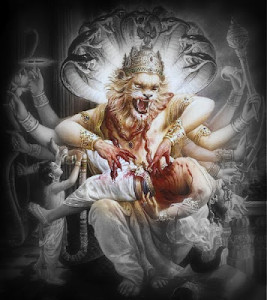 the demon by his nails. And took out the interstines and put them around his neck as a wreath. Narasimha’s nails were filled with strong poison and so caused great heat in his body. Shri Laxmi took Audumbar fuits and thrust Narasimha’s nails in them. The poison and the heat of the body subsided and Laxmi devi and Narasimha swamy were pleased. So they blessed the Audumbar tree “You shall always bear fruits and people will worship you as the Kalpataru . Strong poisons will be subsided even by your sight and sterile women will get issued if they worship you with devotion.
the demon by his nails. And took out the interstines and put them around his neck as a wreath. Narasimha’s nails were filled with strong poison and so caused great heat in his body. Shri Laxmi took Audumbar fuits and thrust Narasimha’s nails in them. The poison and the heat of the body subsided and Laxmi devi and Narasimha swamy were pleased. So they blessed the Audumbar tree “You shall always bear fruits and people will worship you as the Kalpataru . Strong poisons will be subsided even by your sight and sterile women will get issued if they worship you with devotion.
Audumbar is a kalpa-taru in kaliyuga, hence Shri guru Narasimha Saraswathy Swamy who is the second incarnation of Lord Dattatreya lived under it. Brahma, Vishnu and Maheshwara live here in the form of shri Dattatreya. Hence, as Dattatreya is a combination of Brahma, Vishnu and Maheswara, wherever the Datta kshetras are there, one can observe that Lord is under this Audumbar tree. When Shrui Guru lived at Narsobawadi , 64 yoginis used to come to him at midday and take Shri guru to their place under the waters of the river, worshipped and offered him delicious food and Shriguru would return to his place under the Audumbar . Even today also, that Audumbar tree can seen by the devotees who are visiting the Dattakshetra Narsobawadi.
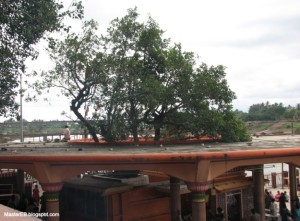 audumbar Vriksha at Narsobawadi Temple |
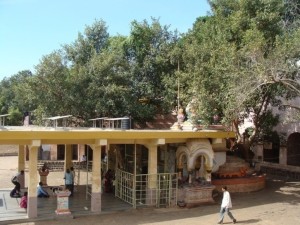 audumbar vriksha at audumbar kshetra |
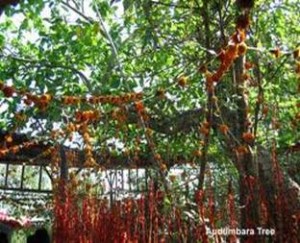 audumbar vriksha at Srikshetra Ganagapur |
Significant practice aspects of this Deeksha and Scientific reasons behind the Deeksha :
who can do It?
This deeksha can be done by any one irrespective of Caste, Creed, religion and Gender.
Which Day?
It can be started on Shubha Muhurtha. Generally preferred because of its association with Lord Dattatreya. Normally many dattatreya devotees start on or ends on the day of Dattajayanthi.
Duration of the Deeksha?
The deeksha is for the duration of 3 days, 7 days, 11 days, 21 days, 40 days. 40 days deeksha is called Mandala deeksha and many try to do for more than 3 days. It is also believed and testimonialized by many devotees that one who takes up this Mandala deeksha for 16 years will get the Darshan of Lord Dattatreya at the end of the 16th year. One point to note here is, if one decides on a particular duration, one must stick to it and should not deviate as it is a holy promise.
Whether Women can take this Deeksha?
Women can do the Deeksha too unlike Iyyappa swamy Deeksha which can be done only by men. But during the five days when nature works for them they have to abstain from this deeksha and then again carry on with the deeksha (if they have taken 40 day deeksha sankalpa). Women genrally do 21 days deeksha to avoid this problem.
(1)Deeksha vastram:
Deeksha vastram means the dress to be worn during the deeksha period. Wearing a deeksha vastra has the following benefits.
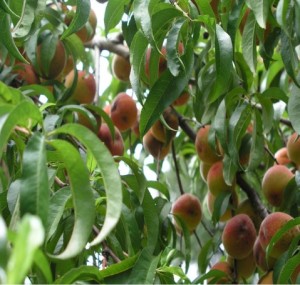 1.A particular sense of belonging to the Lord.2. Healing effect of the colour.3.Grace of the presiding Lord appreciating the devotee’s efforts to please him/her.4. Discipline and Austerity.
1.A particular sense of belonging to the Lord.2. Healing effect of the colour.3.Grace of the presiding Lord appreciating the devotee’s efforts to please him/her.4. Discipline and Austerity.
Deeksha vastram for Audumbar deeksha is green. The significance of the colour is that it is the colour of the leaf of the Audumbara tree.
Green being healing colour and a colour of abundance is most conducive for both spiritual and material progress. Green also has disinfectant and purifying properties. Green is mid way within the color specturm, therefore, it is the color of balance and harmony. It is also the colour of the soul, reflecting the fact that the soul is the liasion between the spirit and the earthly/bodily personality. Because green is midway in the color spectrum, it can be very easily be influenced by higher and lower aspects of the person. When green is dragged down within the aura, and appears murky, it indicates a person who is rather jealous of what others have, possessive, selfish, cunning, and manipulative.
“Green with envy” is a truism, based on the aura. A very murky green indicates chronic depression, when illuminated from above, it denotes a person who seeks to expand his or her own, as well as the general sense of individuality, one who is well balanced, sympathetic, and compassionate. Therefore the color to be worn for Dattatreya deeksha is green and the material must be a simple cotton or linen (not silk or synthetic)
Men:Should wear green color dhothi and green shirt or Green Angavastra and even if a shirt is worn, a green cotton shawl must be worn with a Mudupu.
Women:Should wear all green too –saree, blouse and inner garments too along with a Mudupu too.
(2) Mudupu: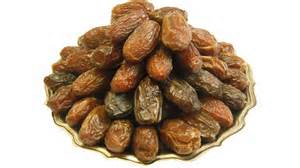
Mudupu means “a tie” in Telugu/Tamil/Kannada/Malayalam. One’s desires must be tied in a “MUDUPU” and it is normally done to plead the Lord to fulfill those desires and make one’s mind free of desires by placing all the following materials by sanctified and blessed by Lord Dattatreya by reciting datta nama in a ¼ metres of Green cloth and have to close the vastra by tightly tying all the four corners of the vastra.
The materials to be kept in Mudupu are 1. Nine one rupee coins Number of coins -leaving thoughts of money behind.
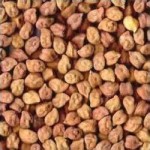 2.One spoon of Kalkand (Crystallized sugar candy) or sugar -leaving thoughts of hunger and taste behind
2.One spoon of Kalkand (Crystallized sugar candy) or sugar -leaving thoughts of hunger and taste behind
3.One spoon of Cow Ghee -leaving thoughts of deha poshana (feeding the body) behind
4.Dry coconut (Copra)-Leaving egoistical thoughts behind (Copra is significant of human head and head is where ego-center is spiritually)
5. One date-fruit
(3) NIYAMAS:
“Niyamas” means the rules for the union of soul to the Lord.
The basic important Niyama of the Deeksha is the devotee should not eat the items having the tasty nature of Chilli, Salt and Citrus (amla). These three items are basis for Trigunas. Lord Dattatreya is TRIGUNAATHEETHA. Hence, the person who is taking the deeksha has to leave all these items during deeksha period and can take sweet items and fresh curd with cooked rice/chapathi or Dosa without salt/ fried Potato without salt etc.,
1. Men and Women should not indulge in kshura karmas of any kind. Kshurakarma means “removing hair, nails etc.,
The spiritual energies flow to the extremities and thus removing them will impede the flow and divert one’s mind to thoughts of beautification of one’s body and hence ego too.
2. Brahmacharya must be practiced during the period of deeksha (total abstinence from sex-thought, word and deed).One have to avoid the reading of Novels, watching TV serials, movies etc.,
3.Tobacco and allied products in any form should not be taken (not to mention any other modern narcotic or addictive drugs unless prescribed by doctor for medicinal purposes)
4.The houses where there is a death/birth become not viable for the performance of this Deeksha. If one has taken Deeksha and if the above events occur then the deeksha must be left immediately.
5.Dattatreya puja must be done with either Sahasranamavali (1008) or Ashottara shathanaamavali (108). Puja can be done with different flowers and leaves (if possible with Bilva or Audumbara leaves also)
Puja must be done twice in a day i.e., morning and evening minimum.
6. One must take bath over head with cold water only everyday in the morning and in the evening.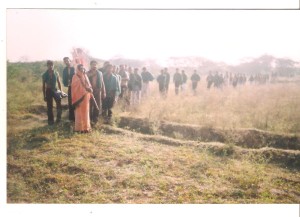
7. One has to leave the chappals/shoes during the deeksha period.
8. The devotees have to wear a mala of Tulsi/Rudraksha/Audumbar beads
9.A small branch of the fig tree (Audumbar vriksha) should be tied to the mala to represent renunciation (temporary) from worldy activities
10.One must sleep on floor (Bhoo shayanam) either on bare floor or just a simple cloth in the house away from bed room and
sleep on your right side to control erotic dreams.
11.Ekabhuktam: Having full-meals just once per day in the afternoon and tiffin during night times.
12.Deeksha has to be taken under proper guidance of a Guru. There must be solid determination to refrain from consumption of wine, non-vegetarian food, eggs, onions, galic, chillies, tobacco and other narcotic drugs, salt, sour items, spicy items etc., If possible, one has to take alms/bhiksha (uncooked items) from atleast 5 houses on everyday at 12 noon.These items have to handed over to the temple.
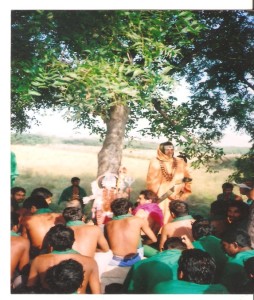 13.One should not consume some fruits/vegetables which might have some characteristics which are in the above list like sourness, saltiness etc., like lemon, orange, Grapes, Tomato
13.One should not consume some fruits/vegetables which might have some characteristics which are in the above list like sourness, saltiness etc., like lemon, orange, Grapes, Tomato
14.When going to any Marriage reception or Bhojanam, one must refrain from consuming the above items and can restrict oneself to a simple deit there too. As far as possible, one should avoid hotels and dining out.
15.Datta stavam for 9 times and Datta stotra or any other datta mantras like malamantra/Vajrakavacha must be chanted everyday during deeksha . Recitation Datta stavam for 9 times is mandatory..
Inner recitation of “Digamabara digambara shree paada vallabha digambara” should be done always during the deeksha period. Shree Gurucharitra parayana should be completed atleast once during the deeksha period.
16.Audumbar vriksha puja has to be performed atleast once during the deeksha period.The puja has to be performed with Shodasopachara and Audumbar paduka stavam.
On the last day of Deeksha, one has to perform Mahanyaasa poorvaka Ekadasha Rudrabhisheka, Anaghavratha/Satya Datta vratha and Datta homam in a proper manner .If possible, it is better to perform Annadana also. Pleaseant manners and sweet speech during the deeksha period and one should address everyone as “DATTA” when addressing gents and “DATTA-AMMA” when addressing ladies. If any one abuses the deeksha devotee, the devotee must refrain from retorting back and must quickly vacate that place and chant “JAYA GURUDEVA DATTA” and must forgive that person whole heartedly. If one cannot do this then the whole purpose of the deeksha is frustrated.
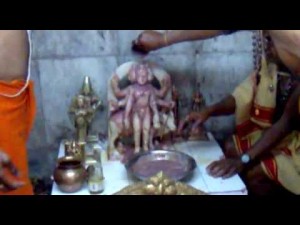 Rudrabhisheka |
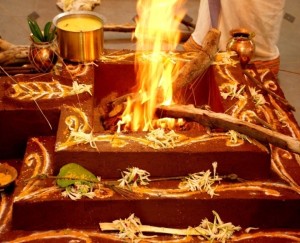 Datta Homa |
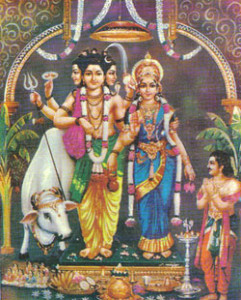 Anagha Vratha |
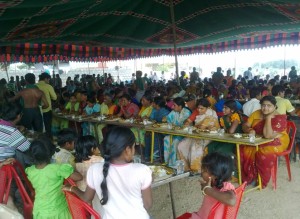 Anna Dana organizing by Datta swamis |
(4)Deeksha virmana: Successful completion of the Deeksha and finishing touches. Deeksha viramana should be taken in a Datta temple or any Datta kshetra like Ethipothala or any other kshetra.
The Mudupu which was tied in the beginning of the deeksha must be given to the priest of the temple where the Deeksha viramana is taking palce. After the deeksha viramana, one can take normal food and can attend regular domestic duties as usual from the next day of deeksha viramana.
(5)Miscellaneous matters: Full faith in Lord Dattatreya and Permission from elderly persons/Guru must be obtained before taking the deeksha.
Full faith in the fact that “I” and Datta shakti are one. Ladies in the house who are not doing the deeksha should observe rules during their menstruation for 5 days by not mingling in the house and should not cook the food till they are free from impurity and shuddhi isto be done on the fifth day with Panchagavyam also. Those who do Sandhyavandana and other Nimmitta and Nitya Karmas must continue those in addition to Datta japa and Datta puja.
The benefits of doing the Audumbara deeksha:
1. Pleases Lord Dattatreya even if done once in one’s life time.
2. Gets the protection of all the Avatars of Dattatreya
3. Desires are fulfilled, soon.
4. Spiritual progress is hastened.
5. Those who do not have a Guruwill get one soon.
6. Prominent desires like –Children,job, health,marriage, etc are also fulfilled.
NOTE: This Deeksha is organizing by the Website authorities also every year before the day of Dattajayanthi. The concerned dates of the Deeksha will be announced in the month of October/November every year. For any clarifications and the persons who are interested to take the Deeksha may contact the Web authorities for further guidance.
Audumbara / Datta Deeksha 2018 dates:
41 Days Deeksha from 12/11/2018 (Monday)
21 Days Deeksha from 02/12/2018 (Sunday)
11 Days Deeksha from 12/12/2018 (Wednesday)
07 Days Deeksha from 15/12/2018 (Saturday)
01 Day Deeksha on 22/12/2018 (Saturday) Datta Jayanthi Day
Deeksha will commence as per above dates at Markapur , Andhra Pradesh Sree Gurudatta Samsthan.
For more details WhatsApp to 9246463846.
Dattatreya Thava Sharanam || Datta Naadha Thava Sharanam
Trigunaatmaka Trigunaatheetha || Tribhuvana Paalaka Thava Sharanam||




